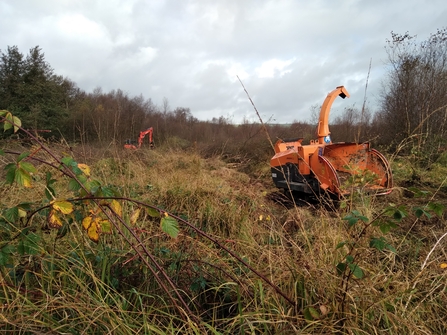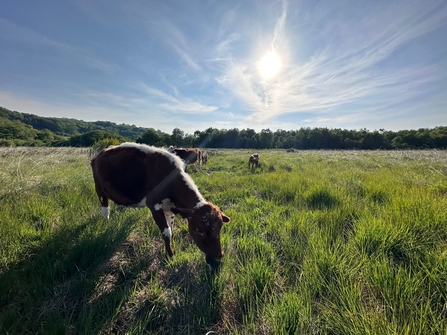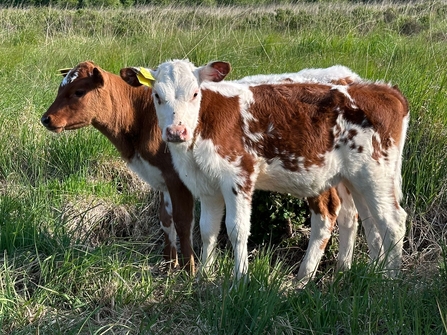The western part of the bog was drained during the 1940’s, and although these ditches were blocked by the then Dyfed Wildlife Trust in the 1980’s, the area still suffers from being too dry. These conditions are exacerbated by scrub encroachment, which shads out and outcompetes specialized bog communities, but also through evapotranspiration continues to dry out the bog.
Last year through funding from NHLF we were able to get local contractors with specialist wetland equipment in to clear and treat much of the encroaching willow and birch scrub. They also cut a large area of the over stood purple moor grass. Purple moor grass is a deciduous grass, meaning that it dies off each winter. However it is too tough to break down in a single season and becomes a ‘thatch’. Each year when it grows anew, it grows on top of the old debris, and becomes larger and more dominant. It forms large tussocks that eventually outcompetes everything else and the sphagnum moss, an essential building block of bogs, disappears.



